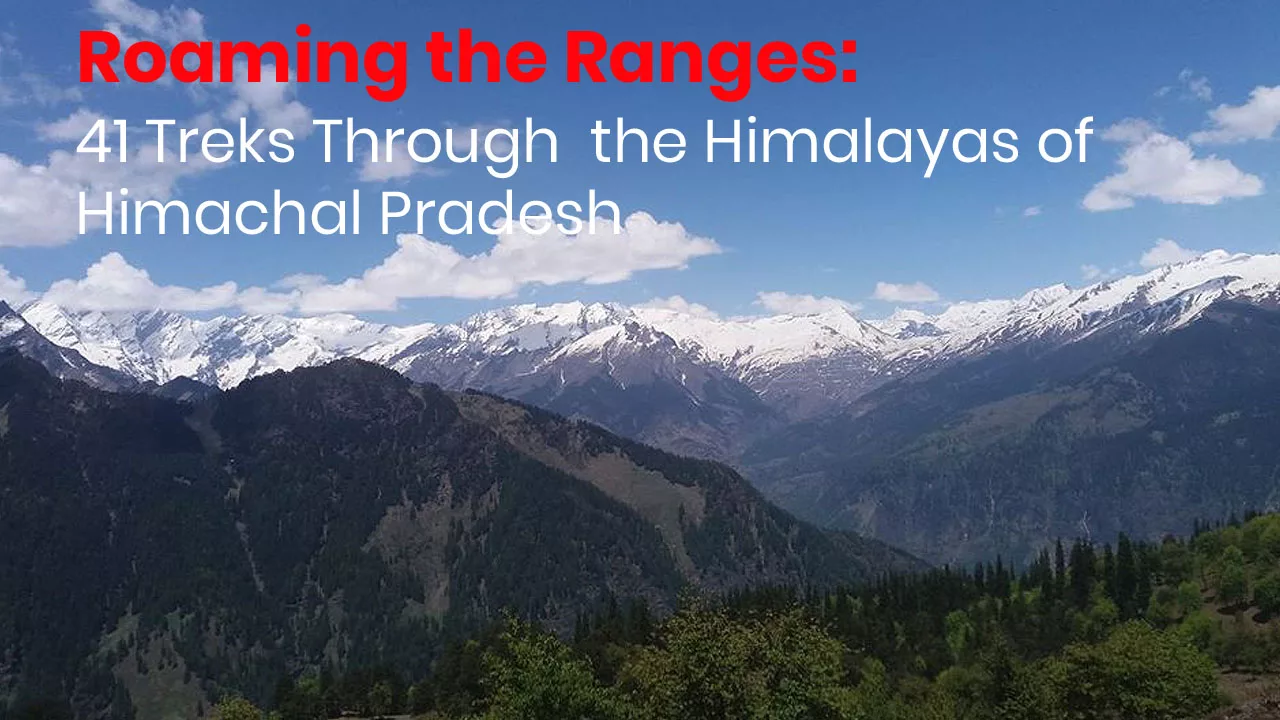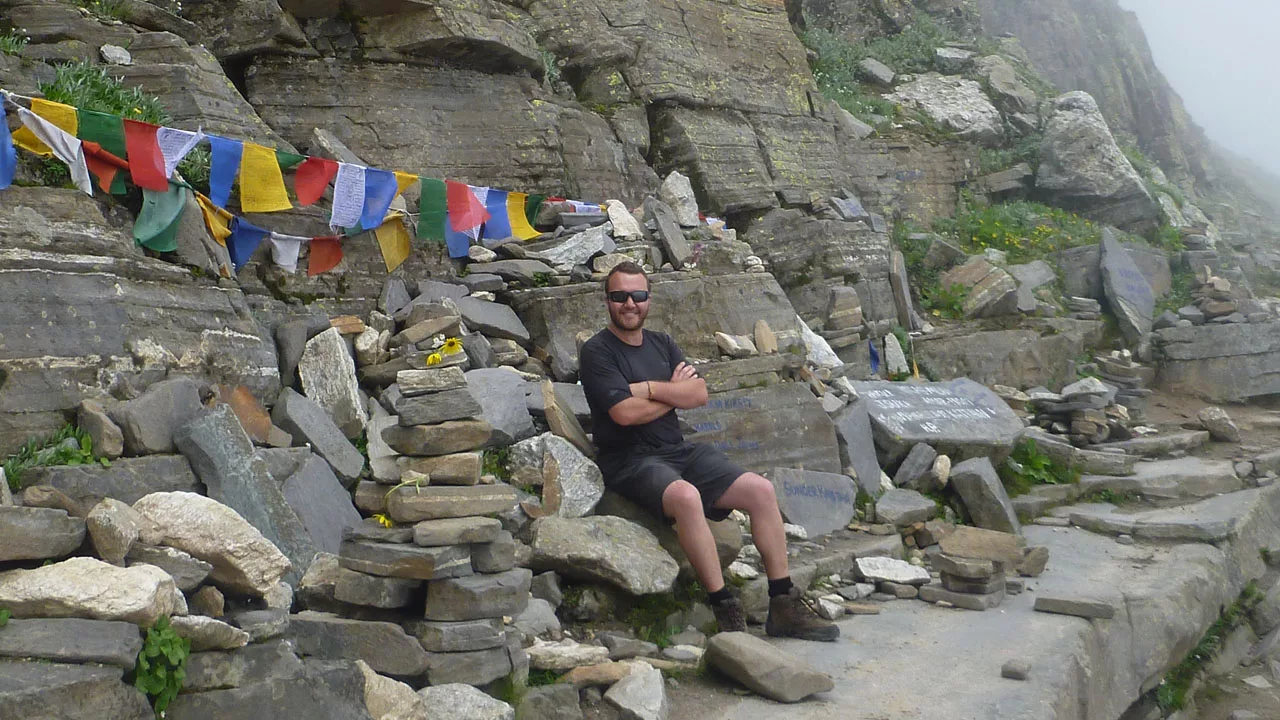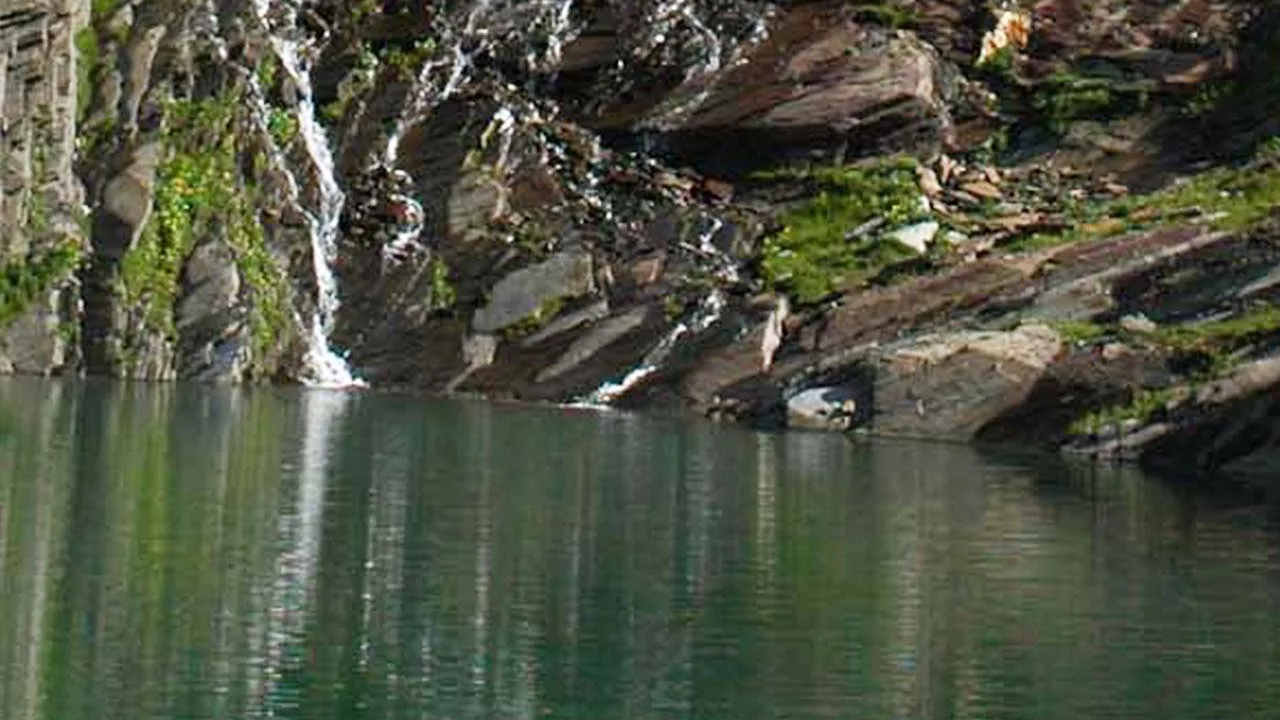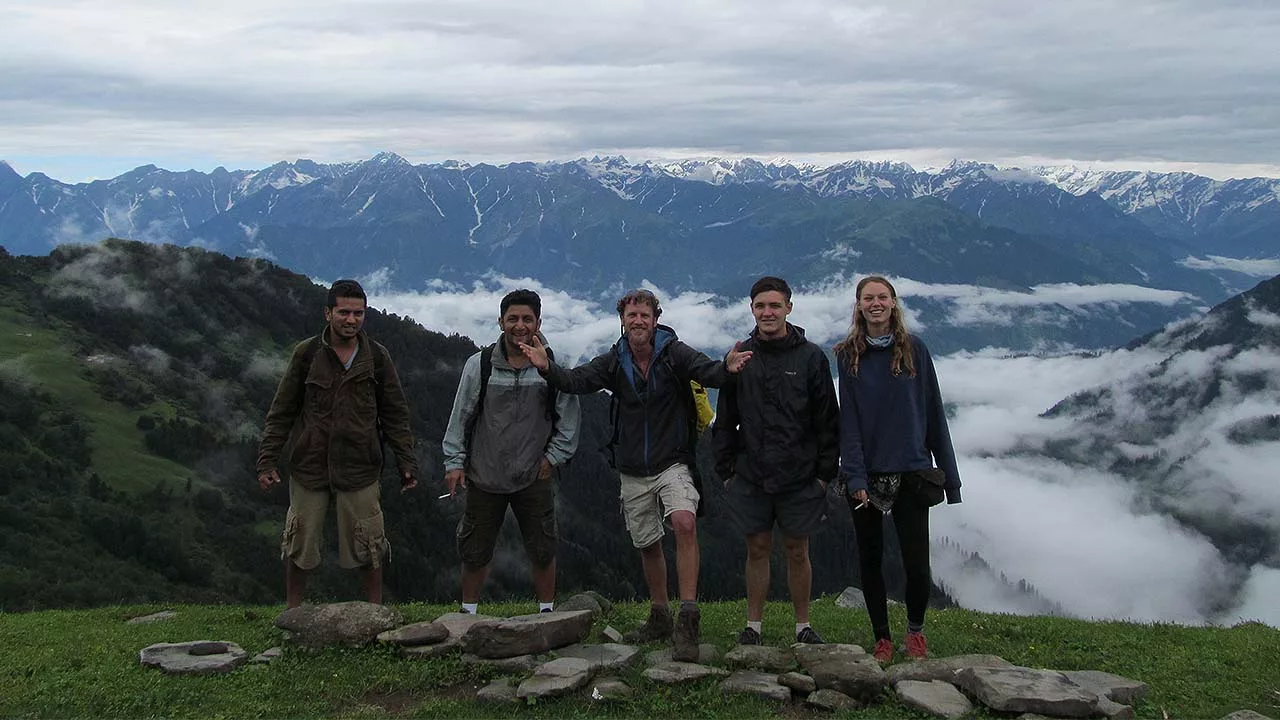6 Best Treks for 2024: Trailblazing in Manali
Blogs
We selected six of the best treks for 2024 in Manali from our 41 treks around Himachal Pradesh’s Himalayas.
Each has a distinct blend of challenges, scenic beauty, and cultural depth. From the famed Hampta Pass Trek to the distant Bara Bhangal Trek, these treks provide remarkable experiences in the Indian Himalayas’ stunning scenery.
- Learn more about our 41 treks in Himachal Pradesh

Importance of Selecting the Right Trek for 2024 an Unforgettable Experience
Selecting the right trek is crucial for ensuring a memorable and rewarding experience. Each trek in Manali offers a unique blend of:
- challenges,
- scenery, and
- cultural encounters.
Factors such as:
- fitness level,
- trekking experience,
- time constraints, and
- personal preferences play a significant role in choosing the most suitable trek.
By carefully assessing these factors, trekkers can maximize their enjoyment and minimize the risk of discomfort or injury during trek/expedition.
Purpose of the Article: Highlighting the 6 Best Treks for 2024 in Manali
The primary purpose of this article is to provide a comprehensive guide to the 6 best treks for 2024 in Manali. By curating a list of top treks, we aim to assist adventure enthusiasts in selecting their next expedition with confidence.
Each trek featured in this article has been chosen based on its:
- popularity
- scenic beauty
- level of difficulty, and
- overall experience it offers
Whether you’re seeking a leisurely hike through verdant valleys or a challenging ascent to towering peaks, Manali has something to offer for everyone.
Join us as we embark on a virtual journey through the breathtaking landscapes and untamed wilderness of Manali’s most iconic treks.
Best Trek in Manali for 2024
1. Best Treks for 2024 – Hampta Pass Trek

Overview and Duration
The Hampta Pass Trek is a captivating journey that takes adventurers through a diverse range of landscapes, from lush green valleys to barren deserts, offering a mesmerizing blend of:
- natural beauty and
- rugged terrain.
This trek typically spans around 4 to 6 days, depending on the chosen route and acclimatization requirements.
Key Highlights Along the Trail
1. Manali to Jobra: The trek usually begins from the picturesque town of Manali, followed by a scenic drive to Jobra, the starting point of the trek.
From here, trekkers embark on:
- a gentle ascent through pine forests and
- meandering streams.
2. Jobra to Chika: The trail gradually ascends towards Chika, a charming campsite nestled amidst towering mountains and lush greenery.
En route, trekkers are treated to stunning views of:
- the Hampta River and
- the surrounding snow-clad peaks.
3. Chika to Balu ka Gera: The next leg of the journey takes trekkers to Balu ka Gera, a high-altitude campsite situated at the base of majestic mountains.
This section of the trek is characterized by
- rocky terrain,
- river crossings, and
- panoramic vistas of the surrounding landscape.
4. Balu ka Gera to Hampta Pass: The highlight of the trek is reaching the breathtaking Hampta Pass, located at an elevation of approximately 14,100 feet.
Trekkers are rewarded with awe-inspiring views of the:
- Lahaul Valley and
- the towering peaks of the Pir Panjal range.
Difficulty Level and Recommended Fitness Level
The Hampta Pass Trek is considered to be moderately challenging, and suitable for trekkers with a moderate level of fitness and prior trekking experience.
While the trail is relatively well-defined, trekkers should be prepared for:
- steep ascents,
- rocky terrain, and
- variable weather conditions.
It is advisable to engage in regular cardio and strength training exercises in the weeks leading up to the trek to improve endurance and stamina.
Best Time to Undertake the Trek
The best time to undertake the Hampta Pass Trek is during the summer months of:
- June to September when the weather is pleasant and the trails are accessible.
During this period, the region experiences:
- clear skies,
- mild temperatures, and
- minimal precipitation, creating optimal conditions for trekking.
It is important to be extra cautious in the monsoon season (July to August) due to the risk of landslides and unpredictable weather patterns.
2. Best Treks for 2024 – Beas Kund Trek

Description and Its Scenic Beauty
The Beas Kund Trek is a spellbinding journey that unveils the pristine beauty of the Himalayas, offering trekkers a glimpse into the awe-inspiring landscapes of the Manali region.
This trek typically spans 3 to 4 days, making it an ideal choice for both beginners and seasoned trekkers alike.
As trekkers venture along the trail, they are greeted by panoramic views of:
- snow-capped peaks,
- verdant meadows, and
- glistening glaciers, creating a picturesque backdrop at every turn.
The route meanders through lush forests of:
- pine and cedar,
- tranquil streams, and
- alpine meadows adorned with vibrant wildflowers, painting a picture-perfect scene of natural splendor.
Notable Attractions Such as the Beas Kund Lake
One of the highlights of the Beas Kund Trek is the legendary Beas Kund Lake, a sacred alpine lake nestled at an altitude of approximately 12,000 feet above sea level.
Surrounded by towering peaks, including:
and Seven Sisters, the lake holds immense spiritual significance for the locals and is believed to be the source of the Beas River.
Trekkers can spend tranquil moments by the pristine shores of Beas Kund, marveling at the crystal-clear waters reflecting the majestic mountains above.
The serene ambiance and breathtaking vistas make it a perfect spot for photography enthusiasts and nature lovers alike.
Considerations for Beginners and Experienced Trekkers
The Beas Kund Trek is renowned for its:
- accessibility and
- easy-to-moderate level, making it suitable for trekkers of all skill levels.
Beginners will appreciate the relatively gentle gradients and well-marked trails, while experienced trekkers can immerse themselves in the stunning surroundings and challenge themselves with optional side excursions to nearby peaks.
However, trekkers should be prepared for variable weather conditions, including:
- sudden changes in temperature and
- occasional snowfall, especially at higher altitudes.
It is essential to pack appropriate clothing, footwear, and gear, as well as to maintain a steady pace and stay hydrated throughout the trek.
Ideal Season for Embarking on This Trek
The best time to undertake the Beas Kund Trek is during the summer months of:
- May to October when the weather is mild and the trails are free from snow.
During this period, trekkers can enjoy:
- clear skies,
- warm temperatures, and
- blooming wildflowers, enhancing the overall trekking experience.
It is advisable to avoid the monsoon season (July to August) due to the risk of landslides and slippery trails.
3. Best Treks for 2024 – Deo Tibba Base Camp Trek

Introduction to the Deo Tibba Base Camp Trek and Its Route
The Deo Tibba Base Camp Trek is a mesmerizing expedition that takes adventurers deep into the heart of the Pir Panjal range, offering panoramic views of:
- snow-capped peaks,
- lush meadows, and
- pristine alpine lakes.
This moderate-level trek typically spans around 5 to 6 days, encompassing a challenging yet rewarding journey through some of the most picturesque landscapes in the Manali region.
The trek begins from the quaint village of Jagatsukh, located on the outskirts of Manali, and gradually ascends through dense forests of:
- oak,
- pine, and
- rhododendron.
Trekkers then proceed towards the scenic campsite of Chikka, situated at an altitude of approximately 10,000 feet above sea level, where they can unwind amidst the serene surroundings and acclimatize to the high altitude.
From Chikka, the trail continues towards the majestic Deo Tibba peak, passing through:
- lush meadows,
- gushing streams, and
- alpine pastures dotted with grazing yak herds.
Trekkers finally reach the base camp of Deo Tibba, located at an elevation of approximately 14,000 feet, where they are rewarded with breathtaking views of the surrounding Himalayan peaks and the pristine Chota Chandratal Lake.
Noteworthy Landmarks Like the Jagatsukh Village and Chikka
1. Jagatsukh Village: Known as the “Village of the Gods,” Jagatsukh is a charming hamlet situated amidst verdant valleys and terraced fields, offering a glimpse into the rich cultural heritage and traditional way of life of the locals.
Trekkers can explore:
- ancient temples,
- historic landmarks, and
- rustic farmhouses while soaking in the tranquil ambiance of this idyllic village.
2. Chikka Campsite: Nestled at the confluence of the Hampta and Tenta rivers, Chikka serves as the perfect base camp for trekkers embarking on the Deo Tibba expedition.
Surrounded by towering peaks in Lahaul and dense forests, this picturesque campsite offers a serene retreat amidst nature’s bounty, with ample opportunities for birdwatching, photography, and star gazing.
Equipment and Gear Essentials for This Moderate-level Trek
To traverse varied terrain and negotiate challenging ascents on the Deo Tibba Base Camp Trek, trekkers must prepare themselves with the following essential equipment and gear:
- Sturdy trekking boots with good ankle support
- Lightweight, breathable clothing suitable for layering
- Insulated jacket, hat, and gloves for cold weather conditions
- Waterproof backpack with rain cover to protect belongings
- Sleeping bag and camping mat for overnight stays
- Trekking poles for stability and support on uneven terrain
- Personal first-aid kit with essential medications and supplies
- High-energy snacks, hydration system, and water purification tablets
- Headlamp or flashlight with extra batteries for evening activities
Best Months for a Successful Trekking Experience
The best time to undertake the Deo Tibba Base Camp Trek is during the summer months of:
- May to June and
- September to October,
when the weather is mild, and the trails are free from snow.
It is advisable to avoid the monsoon season (July to August) due to the risk of landslides, slippery trails, and unpredictable weather conditions.
4. Best Treks for 2024 – Malana Village Trek

Overview of the Trek to Malana Village and Its Cultural Significance
The Malana Village Trek is a captivating journey that takes trekkers off the beaten path and into the heart of one of the oldest and most enigmatic villages in the Kullu Valley.
Malana, nestled amidst the towering peaks of the Parvati Valley, is renowned for its.
- unique culture,
- ancient traditions, and
- distinct way of life.
The trek to Malana village typically begins from the village of Jari or Naggar, winding through dense forests, meandering streams, and terraced fields, before culminating in the scenic village of Malana.
Along the way, trekkers are treated to breathtaking views of the surrounding Himalayan landscape, with opportunities to spot rare flora and fauna endemic to the region.
Malana holds immense cultural significance as one of the oldest democracies in the world, governed by its indigenous legal system known as the “Jamlu Devta” system.
Exploration of the Ancient Village and Its Distinct Traditions
Upon reaching Malana village, trekkers are transported back in time as they explore its narrow alleys, ancient temples, and traditional stone houses adorned with intricate carvings.
The village is steeped in history and mythology, with legends surrounding its origins and the divine protection of its deity, Jamlu Devta.
- Learn more about Malana

One of the highlights of the trek is visiting the sacred temple of Jamlu Devta, where villagers gather to offer prayers and seek blessings for prosperity and well-being.
Trekkers can also witness traditional rituals and ceremonies performed by the locals, providing a fascinating glimpse into Malana’s rich cultural heritage.
Insights into Local Customs and Interactions with Residents
Interacting with the residents of Malana offers trekkers a unique opportunity to learn about their customs, traditions, and way of life.
The villagers, known as “Malanis,” take great pride in their distinct identity and maintain strict social and cultural norms to preserve their heritage.
While exploring the village, we encourage trekkers to respect local customs and etiquette, including refraining from touching sacred objects or entering restricted areas without permission.
It is advisable to seek guidance from a knowledgeable guide or interpreter to facilitate meaningful interactions and avoid inadvertently offending.
Suggestions for Responsible Tourism Practices in Malana
1. Cultural Sensitivity: Respect the cultural beliefs and practices of the Malana villagers, refraining from imposing one’s customs or values upon them.
2. Environmental Conservation: Practice Leave No Trace principles, minimizing impact on the natural environment and disposing of waste responsibly.
3. Support Local Economy: Purchase souvenirs or handicrafts directly from local artisans and businesses, contributing to the sustainable development of the village economy.
4. Community Engagement: Consider participating in community-based initiatives or volunteering opportunities that benefit the residents of Malana and promote cultural exchange.
By following these responsible tourism practices, trekkers can help preserve the unique heritage and way of life of Malana village for future generations to experience and appreciate.
5. Best Treks for 2024 – Pin Parvati Pass Trek

Introduction to the Challenging Pin Parvati Pass Trek
The Pin Parvati Pass Trek is a legendary expedition that traverses some of the most remote and rugged terrain in the Indian Himalayas.
This challenging trek is not for the faint-hearted, as it involves:
- crossing a high-altitude pass at over 17,000 feet,
- crossing wild Parvati river multiple times,
- navigating glaciers, and
- negotiating steep ascents and descents.
Highlights of the Trekking Route, Including the Pin Parvati Valley
The trekking route of the Pin Parvati Pass Trek features dramatic contrasts, ranging from lush green meadows and dense forests to barren landscapes and towering peaks.
The journey typically begins from the quaint village of Barsheni in the Parvati Valley, where trekkers embark on a scenic ascent through pine forests and picturesque hamlets.
As the trek progresses, the trekkers experience:
- breathtaking views of the Parvati River
- cascading waterfalls, and
- snow-capped peaks dotting the horizon
The highlight of the trek is when trekkers reach the majestic Pin Parvati Pass, rewarding them with panoramic vistas of the surrounding mountains and valleys, including the stunning landscape of the Pin Valley on the other side of the pass.
- Learn More about Pin Parvati Pass Trek

Discussion on Fitness Preparation and Mental Resilience Required
Undertaking the Pin Parvati Pass Trek requires:
- a high level of physical fitness,
- endurance, and
- mental resilience due to the strenuous nature of the terrain and the extreme altitude.
Trekkers should engage in rigorous cardio and strength training exercises in the months leading up to the trek to build stamina and endurance.
Additionally, mental resilience is crucial for overcoming the challenges posed by unpredictable weather conditions, altitude sickness, and long days of trekking.
Window of Opportunity for Traversing This High-Altitude Pass
The best time to undertake the Pin Parvati Pass Trek is during the summer months of June to September when the weather is relatively stable, and the trails are free from snow.
However, trekkers must prepared for:
- cold temperatures, especially at higher altitudes
- and be vigilant for signs of altitude sickness.
6. Best Treks for 2024 – Bara Bhangal Trek

Description of the Remote Bara Bhangal Trekking Route
The Bara Bhangal Trek is an epic adventure that takes trekkers through some of the most remote and untouched landscapes in the Indian Himalayas.
Starting from the quaint village of Bir in Himachal Pradesh, the trek winds its way through:
- dense forests,
- alpine meadows, and
- rugged mountain passes before culminating in the remote village of Bara Bhangal.
The trekking route is characterized by:
- its challenging terrain,
- including steep ascents and descents,
- narrow trails along cliff edges, and
- river crossings.
Trekkers are treated to breathtaking views of:
- snow-capped peaks,
- cascading waterfalls, and
- lush valleys, offering a glimpse into the untamed wilderness of the region.
Challenges Posed by Rugged Terrain and Unpredictable Weather
One of the biggest challenges of the Bara Bhangal Trek is the rugged terrain and unpredictable weather conditions.
Trekkers must navigate:
- rocky paths,
- slippery slopes, and
- precarious river crossings, often in remote and isolated areas where rescue services may be limited or unavailable.
The weather in the Himalayas can change rapidly, with sudden storms, heavy rainfall, and snowfall posing additional risks to trekkers.
Importance of Experienced Guides and Team Support
Due to the remote and challenging nature of the Bara Bhangal Trek, experienced guides and team support are indispensable for a successful expedition.
Knowledgeable guides familiar with the terrain can provide:
- valuable insights,
- navigation assistance, and
- safety precautions to mitigate risks and ensure a smooth trekking experience.
Additionally, trekking in a group or with a team provides mutual support, camaraderie, and assistance in overcoming obstacles along the way.
Team members can share resources, help each other during difficult sections of the trail, and provide moral support during moments of fatigue or uncertainty.
Limited Accessibility and Seasonal Constraints for Undertaking This Trek
Experienced trekkers with a high level of fitness and endurance typically undertake the renowned Bara Bhangal Trek due to:
- its limited accessibility and
- seasonal constraints.
The trek usually occurs during the summer months of June to September when the weather remains relatively stable and the trails are snow-free. Trekkers must prepare for isolated conditions, as facilities and accommodations along the route are limited.
It is essential to carry sufficient food, water, camping gear, and emergency supplies, as well as to obtain necessary permits and permissions from local authorities before embarking on the trek.
Due to its remote location and challenging terrain, trekkers should undertake:
- thorough research,
- consult experienced guides or
- trekking agencies, and
- carefully plan their expedition to ensure a safe and memorable journey through the rugged wilderness of the Bara Bhangal region.
Suggestion 6 best Treks for 2024 in Manali
Trekkers should check weather forecasts and consult local guides before planning their trek to ensure a safe and enjoyable experience.
Recap of the 6 best Treks for 2024 in Manali
As we reflect on the exhilarating adventures awaiting us in the mountains, I encourage all adventure enthusiasts to start planning their next trekking expedition from the top 6 best treks for 2024 to Manali. Whether you’re a seasoned trekker seeking new challenges or a novice explorer embarking on your first Himalayan adventure, there’s something for everyone in the majestic landscapes of Manali. So dust off your hiking boots, pack your backpack, and get ready to embark on an unforgettable journey into the heart of the Himalayas.